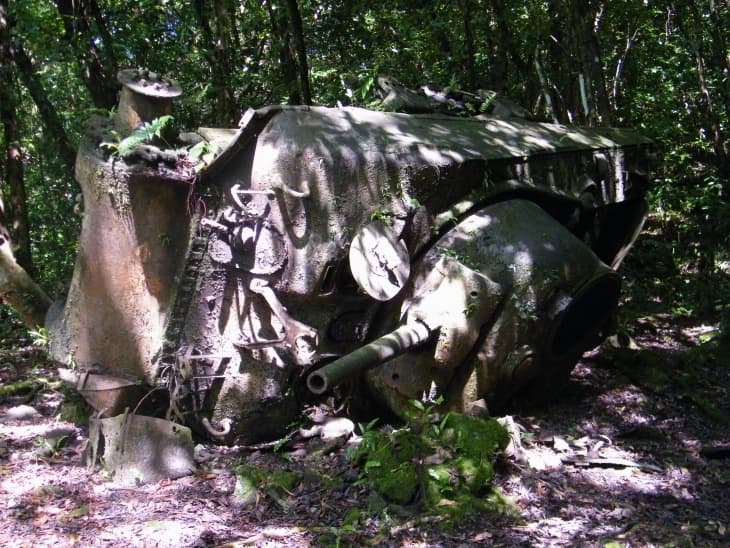- Overview
-

Funded by the US National Park Service through the Palauan Bureau of Arts and Culture (BAC), Rick Knecht and Neil Price are surveying battlefields from the Second World War, when the island was held by the Empire of Japan.
Of the 11,000 Japanese garrison, only 19 survived the American invasion of September 1944, and the US Marines were engaged in what their official records call 'the worst fighting in the history of the Corps'. Today Peleliu is the best-preserved battlefield of the Pacific, overgrown by jungle to such an extent that the island remains full of vehicles, crashed planes and military gear, and many bodies still lie where they fell.
Our surveys take us deep into the Japanese cave systems, still occupied by the dead, mapping the military heritage of the island in advance of new programmes of site management and the development of sustainable eco-tourism. Crucially, the project seeks to recover the voices of Peleliu's forgotten combatants, in a history overwhelmingly dominated by American accounts.
Our aim is to tell Peleliu's story through its battlefield archaeology, from the perspective of the Japanese, the thousands of Korean and Okinawan slave workers who they brought there, and not least the indigenous Palauans themselves, as well as other Micronesian islanders; even on the US side, there are the neglected Peleliu experiences of the African-American and Latino Marines, and of the Navajo and Comanche code talkers who accompanied them.
Image: An American Sherman tank, disabled by a landmine that killed its crew during operations on Peleliu. Now overgrown by jungle, the vehicle is one of many such wrecks that litter the battlefield (photo: Gavin Lindsay)
